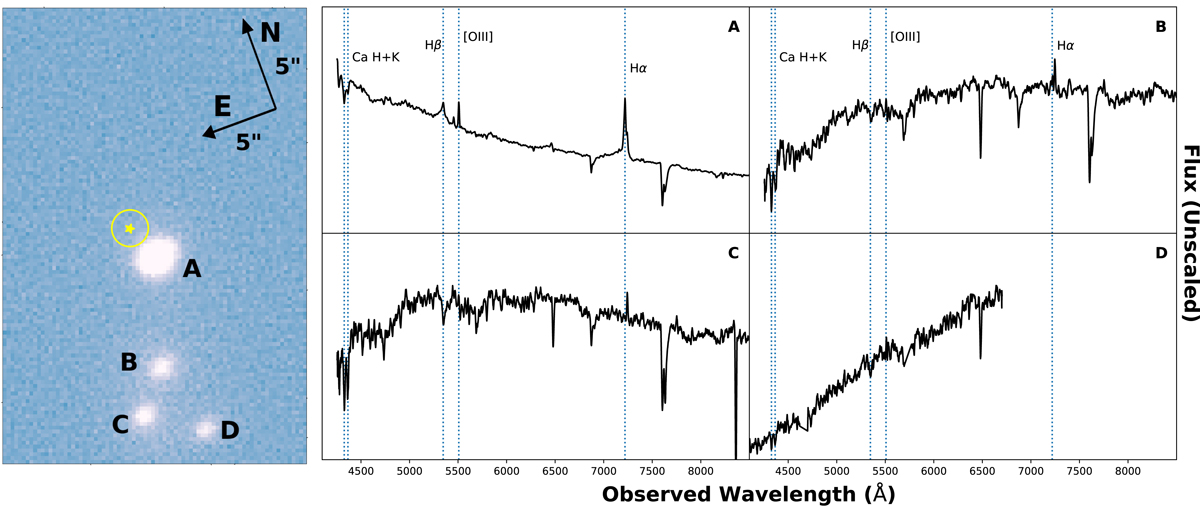Fig. B.3.

Download original image
Counterpart and environment of J234402. Left: The optical counterpart of J234402. The yellow star represents the X-ray position and the yellow circle indicates the 1.0" (1σ radius) positional uncertainty of the eROSITA detection. This image was taken as an acquisition exposure with the Baade telescope using a white filter during our spectroscopic follow-up campaign. The source area includes four targets (labelled A–D), which were found to be at the same redshift. The Northern object, labelled A, is associated with the significant X-ray-flux increase detected by eROSITA, as well as with the significant optical outburst seen with Gaia (TNS#85552). Right: Overview of the spectra taken for the four objects that make up the galaxy group containing J234402. The labels A through D correspond to the objects in the image on the left. Object A is J234402. The spectra are plotted at their observed wavelengths, and the positions of several spectral lines, at z = 0.100 are shown in each plot. The plots illustrate the clear difference in spectral classification among the objects — object A shows an AGN-like spectrum, whereas the other three objects appear to be quiescent galaxies. The flux scale is arbitrary, and we note that the spectrum for object D has not been flux-calibrated. Spectra for A, B, and C are from the Baade (Magellan) observation. The spectrum for D is from the SALT observation of MJD 59206 (23 December).
Current usage metrics show cumulative count of Article Views (full-text article views including HTML views, PDF and ePub downloads, according to the available data) and Abstracts Views on Vision4Press platform.
Data correspond to usage on the plateform after 2015. The current usage metrics is available 48-96 hours after online publication and is updated daily on week days.
Initial download of the metrics may take a while.


